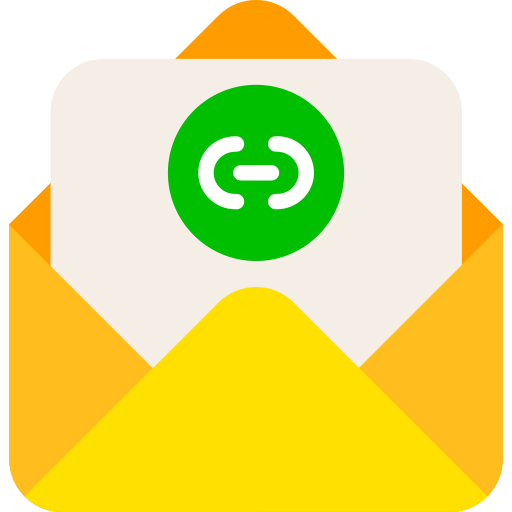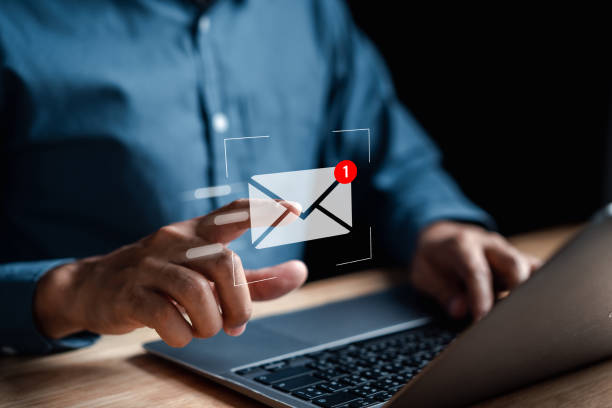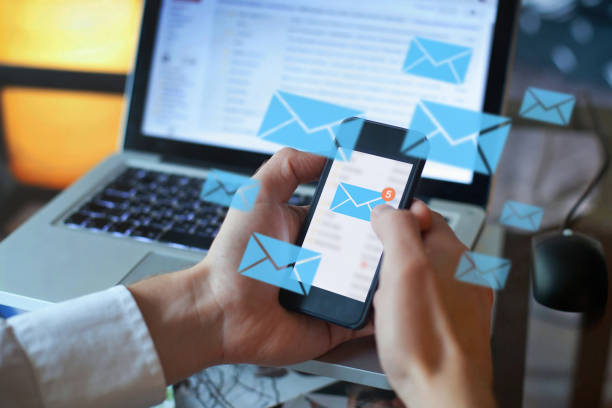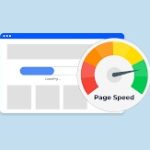Email marketing remains one of the most effective digital marketing channels for small businesses, offering a direct line of communication with customers and audiences. A well-crafted email marketing strategy not only boosts conversion rates and builds long-term customer loyalty but also guides potential customers along the sales funnel. In this blog, we discuss how to design and implement effective email campaigns—from crafting compelling email content and personalized emails to utilizing advanced email marketing tools and automation. By exploring types of email marketing, segmentation, and performance metrics, you’ll learn how to achieve your business goals and drive meaningful results.

Define Email Marketing and Its Significance
Email marketing involves sending targeted messages to a curated email list of subscribers using email marketing software or platforms like Constant Contact, Shopify Email, or Squarespace Email Campaigns. Its significance lies in its ability to deliver valuable content directly into the inboxes of potential customers, bypassing crowded social media channels. For small businesses, email marketing is a cost-effective way to nurture leads, increase engagement, and foster long-term relationships. When executed correctly, it transforms a simple mailing list into a powerful channel that improves conversion rates, builds customer loyalty, and boosts overall digital marketing strategy.
Explore Different Types of Emails
A robust email marketing strategy incorporates various types of email campaigns tailored to different stages of the customer journey:
Promotional Emails
These are marketing emails designed to drive immediate sales or engagement by featuring special offers, discounts, or product launches. They often include compelling calls to action and high-quality images to capture attention quickly.
Newsletter Emails
Email newsletters keep your audience informed about your business updates, industry news, and valuable content. They help build trust and maintain ongoing relationships by consistently delivering helpful information.
Transactional Emails
Sent automatically after a specific user action (such as confirmation emails, cart emails, or shipping notifications), transactional emails focus on the user experience by confirming purchases and providing key details.
Drip or Series Emails
An automated series of emails, drip campaigns nurture leads over time with personalized content that gradually guides subscribers through the sales funnel. They are essential for re-engagement campaigns and building long-term relationships.
Understand the Importance of Email Segmentation
Email segmentation involves dividing your overall mailing list into smaller, more targeted audience segments based on factors such as demographics, behavior, or purchase history. By doing so, you ensure that your emails are relevant to each subgroup, leading to higher engagement rates and lower unsubscribe rates. For example, sending re-engagement emails to inactive customers, or personalized cart recovery emails to those who abandoned their carts, improves conversion rates. Utilizing segmentation not only optimizes your marketing efforts but also reduces the chance of your emails ending up in the spam folder, ultimately saving on marketing budgets and time.
Personalization Techniques for Targeted Engagement
Personalization is key to making your emails resonate with your target audience. Implement techniques such as addressing recipients by their first name, customizing the email subject and content based on their previous interactions, and dynamically inserting relevant product recommendations. Using dynamic content blocks and Interactive emails can create a unique experience for each recipient, improving both click-through rates and conversion rates. Personalized emails that reflect customer behavior and preferences lead to stronger relationships with subscribers and a higher overall rate of customer retention.
Selecting the Right Email Service Provider
Choosing an effective email service provider (ESP) is fundamental to executing a successful email marketing campaign. Look for a platform that offers robust email marketing tools, a user-friendly Drag-and-Drop Email Editor, customizable templates, and automation capabilities. Providers such as Constant Contact, Campaign Monitor, and others offer responsive email templates and tools for segmentation, personalization, and A/B testing. Ensure the ESP you select aligns with your business goals, supports integration with other digital marketing channels like Google Analytics and email automation tools, and can handle a growing email list without compromising email deliverability.
Effective List-Building Techniques
Your email list is the foundation of your email marketing strategy. Effective list-building techniques include:
- Utilizing Lead Magnets: Offer valuable incentives—such as e-books, discount codes, or free trials—in exchange for email addresses.
- Creating Engaging Signup Forms: Design visually appealing, mobile-friendly signup forms using a Drag-and-Drop Email Editor to capture contacts.
- Leveraging Social Media: Use your social media platforms to promote newsletter signups and encourage followers to join your mailing list.
- Optimizing Website Pop-Ups: Implement strategically timed pop-ups that encourage visitors to subscribe, without causing excessive disruption.
By employing these methods, you build a robust mailing list of engaged email subscribers ready for targeted email campaigns.

Utilizing Lead Magnets
Lead magnets are incentives provided to potential customers to encourage them to subscribe to your email list. They should offer immediate, tangible value and be relevant to your target audience. Common lead magnets include free downloadable guides, webinars, discount coupons, and exclusive access to new product releases. An effective lead magnet not only increases the number of contacts in your mailing list but also ensures that those contacts are highly interested in your offerings, leading to improved conversion rates and a more engaged audience.
Creating Engaging Signup Forms
An engaging signup form is critical for converting website visitors into email subscribers. Here are some best practices:
- Keep it Simple: Ask for minimal information—typically just an email address and, optionally, a first name for personalization.
- Use Eye-Catching Designs: Incorporate appealing color schemes, clear fonts, and a strong call to action (CTA) to prompt users to subscribe.
- Optimize for Mobile: Ensure that your signup forms are responsive and function seamlessly on all devices, including smartphones and tablets.
- Offer Incentives: Clearly mention your lead magnet or incentive to boost signup rates.
A well-designed signup form not only improves list-building efforts but also sets the stage for a positive customer journey right from the start.
Crafting Compelling Email Content
Creating engaging email content is at the heart of a successful email marketing strategy. Effective email content should be:
- Relevant and Valuable: Provide information, tips, or offers that are useful to your subscribers.
- Clear and Concise: Keep your message straightforward, avoiding excessive jargon.
- Visually Appealing: Use high-quality images and well-structured layouts to support your message.
- Action-Oriented: Incorporate strong CTAs that drive the reader toward the next step in your sales funnel.
When crafting emails, focus on creating content that guides customers through their journey—from initial awareness to final purchase—ensuring that each message is a step toward building long-term relationships.
Designing Emails for Mobile Optimization
With many users reading emails on mobile devices, designing for mobile is critical. Ensure your emails use responsive email templates that adapt to different screen sizes, providing a consistent user experience across smartphones, tablets, and desktops. Consider the following:
- Responsive Design: Use fluid layouts that adjust automatically.
- Readable Fonts and Buttons: Ensure text is legible and CTAs are easily clickable.
- Minimalist Layouts: Avoid clutter by keeping email designs simple and focused.
- Test on Multiple Devices: Use email testing tools to view your email on various devices and browsers.
Mobile optimization ensures that your emails deliver a smooth, engaging experience, reducing bounce rates and driving higher conversion rates.
Best Practices for Subject Lines
The email subject line is often the first interaction a subscriber has with your campaign. To maximize open rates:
- Keep It Concise: Aim for a subject line that is brief yet compelling.
- Include Relevant Keywords: Reflect the email’s content and spark curiosity.
- Create a Sense of Urgency: Use phrases like “Limited Time Offer” to prompt immediate action.
- Personalize When Possible: Include the recipient’s name or a customized element for better engagement.
- Test Different Variations: Use A/B testing to determine which subject lines perform best.
A well-crafted subject line sets the stage for high open rates and initiates a positive customer engagement cycle.
Timing and Frequency of Email Campaigns
Determining the optimal time to send your emails is essential. Consider factors such as:
- Peak Hours: Analyze data to determine when your audience is most active.
- Email Frequency: Avoid overloading your subscribers by finding a balance between regular communication and spam.
- Consistency: Establish a regular schedule (e.g., weekly or monthly) to set expectations.
- Campaign Type: Adjust frequency based on whether the email is promotional, transactional, or part of a drip campaign.
By strategically timing your sends, you ensure that emails arrive when subscribers are most likely to engage, thereby improving open and conversion rates.
Analyzing Email Campaign Performance
Key Metrics to Monitor
Successful email campaigns are data-driven. Monitor key performance indicators (KPIs) such as:
- Click-Through Rates (CTR): The percentage of recipients who click on a link.
- Conversion Rates: How many clicks result in a desired action (e.g., purchase, sign-up).
- Bounce Rate: The percentage of emails that couldn’t be delivered.
- Unsubscribe Rates: Indicates if your emails are meeting subscriber expectations.
- Engagement Rates: Measures overall user interaction with your content.
- Email Open Rates: Reflects the effectiveness of your email subject lines.
Tracking these metrics provides valuable insights into your email campaign performance and highlights areas for improvement.
Tools for Email Analytics
Utilize Email Marketing Tools and analytics platforms—such as Google Analytics, Campaign Monitor, or Constant Contact—to gain deeper insights into your campaign performance. These tools help you analyze the email marketing strategy across multiple channels and provide real-time data on how your emails are performing. By leveraging these insights, you can adjust your bidding strategies (if applicable), content, and design to better meet your marketing goals.
Continuously Improving Email Strategies
Email marketing is an ongoing process that requires constant refinement. To stay ahead:
- A/B Test Your Emails: Experiment with different subject lines, content, and CTAs to determine what drives the highest engagement.
- Monitor Subscriber Feedback: Use surveys and direct feedback to understand audience preferences.
- Review Performance Metrics: Regularly analyze key metrics to identify trends and areas for improvement.
- Refine Segmentation: Adjust your audience segments as your mailing list grows and evolves.
- Update Email Templates: Refresh your designs periodically to maintain a modern, engaging look.
Continually refining your email marketing efforts ensures that your campaigns remain relevant, valuable, and effective over time, leading to improved conversion rates and stronger customer relationships.
Real-World Examples of Successful Campaigns
Successful email marketing campaigns often incorporate a mix of strategies tailored to their audience:
- An eCommerce business might use a series of re-engagement emails featuring personalized product recommendations and cart recovery emails, boosting conversion rates and reducing bounce rate.
- A service-based business could send transactional emails and follow-up survey emails to gather feedback and improve customer loyalty.
- Another company might integrate dynamic content blocks in their newsletters to highlight promotions and new products, resulting in higher click-through rates and improved engagement.
These examples illustrate how aligning email content, timing, and design with user intent creates a seamless and effective customer journey.
Common Mistakes to Avoid in Email Marketing
Avoiding pitfalls is as important as adopting best practices:
- Overloading Emails with Information: Too much content or cluttered designs can overwhelm subscribers.
- Neglecting Mobile Optimization: Failing to design responsive emails can lead to poor user experiences on mobile devices.
- Ignoring Segmentation: Sending generic emails without segmentation results in low engagement.
- Poor Subject Lines: Weak or vague subject lines reduce open rates.
- Excessive Frequency: Bombarding your mailing list can lead to increased unsubscribe rates and a higher chance of being marked as spam.
- Neglecting Compliance: Not following the CAN-SPAM Act or GDPR guidelines can lead to legal issues and damage your reputation.
By avoiding these common mistakes, you ensure that your email campaigns remain effective, professional, and engaging.
Legal Considerations and Compliance
Compliance with legal standards is critical in email marketing. Familiarize yourself with regulations like the CAN-SPAM Act, GDPR, and any local laws governing email communications. Key legal considerations include:
- Providing a Clear Unsubscribe Option: Ensure each email includes a visible, easy-to-use unsubscribe link.
- Accurate Sender Information: Use a valid physical address and accurate sender details.
- Clear Consent: Obtain permission from contacts before sending emails, maintaining a clean and verified mailing list.
- Transparent Data Use: Clearly state how subscriber information will be used and ensure privacy policies are up-to-date.
- Avoiding Spam Practices: Refrain from keyword stuffing or misleading subject lines that might trigger spam filters.
Following these guidelines protects your business and builds trust with your target audience.
Why Choose LinkLumin for EMail Marketing Campaigns?
At LinkLumin, we understand the intricacies of email marketing and the importance of building long-term relationships with your subscribers. Our comprehensive approach combines effective email marketing services with personalized strategies designed to boost conversion rates and enhance customer engagement. Using state-of-the-art email marketing tools, customizable email templates, and a proven process for segmentation and content creation, we help businesses create successful email campaigns that resonate with diverse audiences. Whether you’re sending Promotional emails, transactional emails, or re-engagement emails, our team works tirelessly to optimize every aspect of your email strategy for maximum ROI.

Conclusion
Crafting the ultimate email marketing strategy requires a delicate balance between creativity, data analysis, and ongoing refinement. By defining your goals, employing effective segmentation, and leveraging dynamic content and responsive email templates, you can transform your email campaigns into powerful tools for customer acquisition and retention. Whether you’re targeting new leads or nurturing existing relationships, continuous improvement and adherence to legal standards are key. Partner with LinkLumin to harness expert email marketing services that drive results, enhance customer loyalty, and propel your business growth in the competitive digital landscape.
Tags




